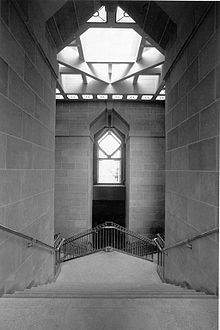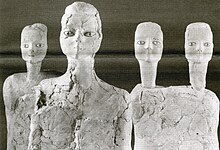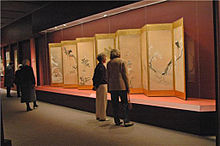
The Smithsonian Institution, or simply the Smithsonian, is a group of museums, education and research centers, the largest such complex in the world, created by the U.S. government "for the increase and diffusion of knowledge." Founded on August 10, 1846, it operates as a trust instrumentality and is not formally a part of any of the three branches of the federal government. The institution is named after its founding donor, British scientist James Smithson. It was originally organized as the United States National Museum, but that name ceased to exist administratively in 1967.

The Anacostia Community Museum is a community museum in the Anacostia neighborhood of Washington, D.C., in the United States. It is one of twenty museums under the umbrella of the Smithsonian Institution and was the first federally funded community museum in the United States. The museum, founded in 1967, was created with the intention to bring aspects of the Smithsonian museums, located on the National Mall, to the Anacostia neighborhood, with the hope that community members from the neighborhood would visit the main Smithsonian museums. It became federally funded in 1970 and focuses on the community in and around Anacostia in its exhibitions. This museum also houses a library.

The Freer Gallery of Art is an art museum of the Smithsonian Institution in Washington, D.C. focusing on Asian art. The Freer and the Arthur M. Sackler Gallery together form the National Museum of Asian Art in the United States. The Freer and Sackler galleries house the largest Asian art research library in the country and contain art from East Asia, South Asia, Southeast Asia, the Islamic world, the ancient Near East, and ancient Egypt, as well as a significant collection of American art.

The Smithsonian American Art Museum is a museum in Washington, D.C., part of the Smithsonian Institution. Together with its branch museum, the Renwick Gallery, SAAM holds one of the world's largest and most inclusive collections of art, from the colonial period to the present, made in the United States. More than 7,000 artists are represented in the museum's collection. Most exhibitions are held in the museum's main building, the Old Patent Office Building, while craft-focused exhibitions are shown in the Renwick Gallery.

Charles Lang Freer was an American industrialist, art collector, and patron. He is known for his large collection of East Asian, American, and Middle Eastern art. In 1906, Freer donated his extensive collection to the Smithsonian Institution, making him the first American to bequeath his private collection to the United States. To house the objects, including The Peacock Room by James McNeill Whistler, Freer funded the construction of the Freer Gallery of Art in Washington, D.C.

The National Museum of African Art is the Smithsonian Institution's African art museum, located on the National Mall of the United States capital. Its collections include 9,000 works of traditional and contemporary African art from both Sub-Saharan and North Africa, 300,000 photographs, and 50,000 library volumes. It was the first institution dedicated to African art in the United States and remains the largest collection. The Washington Post called the museum a mainstay in the international art world and the main venue for contemporary African art in the United States.

Arthur Mitchell Sackler was an American psychiatrist and marketer of pharmaceuticals whose fortune originated in medical advertising and trade publications. He was also an art collector. He was one of the three patriarchs of the controversial Sackler family pharmaceutical dynasty.

Masami Teraoka is an American contemporary artist. His work includes Ukiyo-e-influenced woodcut prints and paintings in watercolor and oil. He is known for work that merges traditional Edo-style aesthetics with icons of American culture.

Ernst Emil Herzfeld was a German archaeologist and Iranologist.

Smithsonian Libraries and Archives is an institutional archives and library system comprising 21 branch libraries serving the various Smithsonian Institution museums and research centers. The Libraries and Archives serve Smithsonian Institution staff as well as the scholarly community and general public with information and reference support. Its collections number nearly 3 million volumes including 50,000 rare books and manuscripts.

The Belitung shipwreck is the wreck of an Arabian dhow which sank around 830 AD. The ship completed the outward journey from Arabia to China, but sank on the return journey from China, approximately 1.6 kilometres (1 mi) off the coast of Belitung Island, Indonesia. It is unclear why the ship was south of the typical route when it sank. Belitung is to the south-east of the Singapore Strait by 610 kilometres (380 mi), and this secondary route is more normal for ships travelling between China and the Java Sea, which is south of Belitung Island.
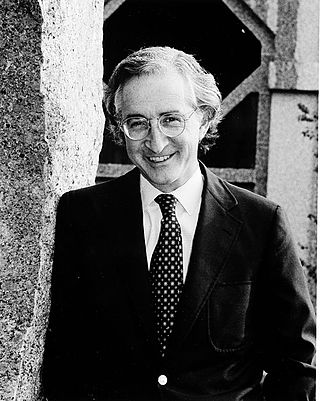
Milo Cleveland Beach is an American art historian and the former director of the Arthur M. Sackler Gallery and the Freer Gallery of Art.
J. Keith Wilson is an American Asian art curator. He is the Associate Director and curator of Ancient Chinese art at the Freer Gallery of Art and Arthur M. Sackler Gallery at the Smithsonian Institution in Washington, DC. Wilson is the former chief curator of Asian art at the Los Angeles County Museum of Art (LACMA).
Pouran Jinchi is an Iranian-born American visual artist. She is known for her abstract, calligraphy-based contemporary visual art. Jinchi lives in New York City.
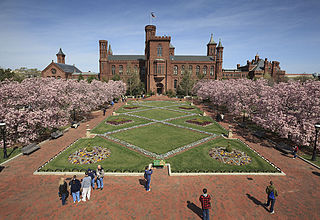
The Smithsonian Gardens, a division of the Smithsonian Institution, is responsible for the "landscapes, interiorscapes, and horticulture-related collections and exhibits", which serve as an outdoor extension of the Smithsonian's museums and learning spaces in Washington, D.C. Established in 1972 as a groundskeeping and horticulture program, Smithsonian Gardens currently manages 180 acres of gardens on the National Mall, 64,000 square feet of greenhouse production space, and the Archives of American Gardens, a research collection of over 60,000 photographs and archival records covering American landscape history from the 1870s to the present.

Vidya Dehejia is a retired academic and the Barbara Stoler Miller Professor Emerita of Indian and South Asian Art at Columbia University. She has published 24 books and numerous academic papers on the art of South Asia, and has curated many exhibitions on the same theme.
Conservation and restoration at the Smithsonian Institution deals with the care of the 138 million artifacts located in the collections of Smithsonian Institution. Work is conducted by one research center, the Museum Conservation Institute (MCI), and by conservators at the Smithsonian's museums, galleries, zoo. Smithsonian conservators provide myriad services to their units, including exhibit preparation of the museum collection and loan objects, advising on object care, training for future generations of conservationists, engaging in routine preventive care on a daily basis, conducting research projects related to the collections, and examining objects for evidence of manufacturing techniques and previous restorations All conservation labs collectively further the mission of the Smithsonian Institution, "the increase and diffusion of knowledge." Founded in 1846 the Smithsonian is the world's largest museum and research complex, consisting of 19 museums and galleries, the National Zoological Park, and nine research facilities.

Jan Stuart is an American art historian specialising in Chinese painting, ceramics and decorative arts. She is currently the Melvin R. Seiden Curator of Chinese Art at the Freer Gallery of Art and Arthur M. Sackler Gallery in Washington, D.C.
Massumeh Farhad is an Iranian-born American curator, art historian, and author. She is the Chief Curator and Curator of Islamic Art at the Freer Gallery of Art and Arthur M. Sackler Gallery at the Smithsonian Institution National Museum of Asian Art. She is known for her work with Persian 17th-century manuscripts.

The National Museum of Asian Art consists of the Smithsonian Institution’s two Asian art galleries, the Freer Gallery of Art and the Arthur M. Sackler Gallery, which are situated in connecting buildings on the National Mall in Washington, D.C. The galleries are operated by the same board of trustees and share a budget. Both institutions are run by the same management, curatorial and other staff. The two galleries feature 45,000 works of Asian art.


